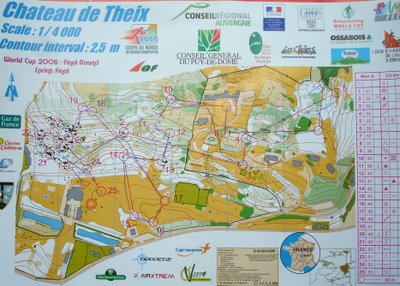Occassional thoughts about orienteering
| okansas.blogspot.com Occassional thoughts about orienteering |
|
Wednesday, October 04, 2006 Can you predict booms?A few years ago I had this idea that I could figure out a way to look at a course and predict which controls runners would boom.I started by looking at courses and just picking the 2 or 3 controls that I thought looked most likely to be boomed. That didn't work. I tried to go the other way around, looking at splits, figuring out which controls people boomed, then looking at the course and seeing what it was about those controls that lead to mistakes. I figured I could find common causes for booms. That didn't work. I tried to be systematic - collecting info about each leg, then seeing if some features of legs were correlated with booms. That didn't work. I tried reading what good orienteers had to say about their booms. That gave me a clue. Lots of booms happened when the map was misleading (e.g. the forest was shown as white, but was actually thick). I never learned to predict booms.* Which is, I suppose, something I learned. When I was trying to predict mistakes, I wasn't looking at sprint courses. I wonder if I could predict mistakes on sprint courses? It might be more practical because there are a couple of relatively common sprint-specific types of problems. One type is the skipped control. For example, on the map below it might be possible to either run from 17 to 19 or run from 18 to 20. The other type is the missed uncrossable feature. For example, on the map below it'd be fairly easy to lose time on the way to 3 if you didn't see how far off the straight line you need to go to get over the uncrossable fence.  The map is from the French world cup sprint race, with Daniel Hubmann's routes. *I should point out that I was trying to predict when elite orienteers would boom. I suspect that predicting booms for average orienteers might be easier. posted by Michael | 7:39 PM
Comments:
Post a Comment
|
|
||||
|
|
|||||